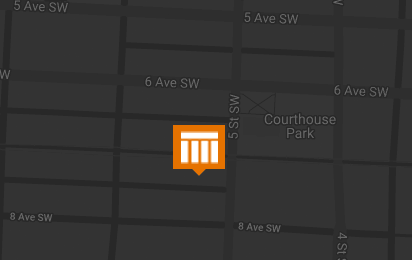Publication
Limitation Periods: An Important Issue for Lenders Considering Legal Action
Limitation Periods: An Important Issue for Lenders Considering Legal Action
Legal claims must be made within legislated time periods referred to as limitation periods. Legal action should be considered a last resort but lenders with a potential debt claim should familiarize themselves with applicable limitation periods because the implications of missing a limitation period can be dire. Debtors can avoid liability for debts owed where an action is brought after the limitation period has expired. Therefore, a lender who lingers too long may become a lender without legal recourse.
The Purpose of Limitation Periods
Limitation periods encourage litigants to raise their claims sooner rather than later. As time passes, recollections become unreliable and evidence becomes harder to obtain. The interests of justice necessitate that legal disputes be decided upon the best possible evidence. Therefore, the law places time limits on a plaintiff’s ability to recover from defendants.
Additionally, limitation periods provide certainty. Time limits balance a plaintiff’s right to obtain enforceable remedies with a defendant’s interest in being free from an indefinite threat of legal action.
Common Limitation Periods
Section 3(1) of the Alberta Limitations Act, RSA 2000, c L-12 sets out two general limitation periods and confirms the limitation period expiring first is applicable to a claim. Although the Limitations Act will apply to many claims in Alberta, it is not applied to all areas of law or in all jurisdictions. For example, section 531(2) of the Municipal Government Act, RSA 2000, c M-26 states a person bringing an action for gross negligence against a municipality must bring their action within 21 days. Obtaining legal advice about the area of law applicable to a claim is crucial to determining the correct limitation period.
Section 3(1) applies to most common debt problems including, but not limited to, outstanding loans, unpaid rent, and contract breaches.
Section 3(1)(a) states plaintiffs must file their claims within 2 years of the date they reasonably knew an injury was attributable to the defendant. This limitation period relates to the “discoverability” of an action. A claim is “discovered” when a plaintiff obtains enough information to bring a legal action. Determining the commencement of this limitation period can be difficult and may require advice from a lawyer.
Section 3(1)(b) sets out a second, longer limitation period. Here, a claim must be brought within 10 years of the event forming the basis of the claim. The 10-year limitation clock begins to run regardless of whether or not the plaintiff has discovered the existence of a legal action. Thus, Section 3(1)(b) creates an absolute limit on a claimant’s ability to sue. A lender who discovers their debt claim after the ten-year period has passed will likely be out of luck.
The Limitation Period Defence
Expiration of the limitation period is a complete defence. Where a defendant raises a limitation period defence and the plaintiff fails to prove the claim was filed within the relevant time period, the plaintiff losses the right to recover damages. Therefore, a lender with a reasonable legal claim who delays too long could lose their opportunity to receive damages for an unpaid debt.
Suspension of Section 3(1) Limitation Periods
The law recognizes that limitation periods potentially prejudice the claims of vulnerable persons. Therefore, the Limitations Act contains exceptions to the timelines set out in section 3(1). Limitation periods are postponed while:
- a claimant is under a disability and unable to manage their claim (section 5(1));
- a claimant is under the age of majority (section 5.1(2)); or
- where the debtor fraudulently conceals the actions (section 4(1)).
It is important to note, these general exceptions merely suspend limitation periods. A limitation period begins to run again when an individual is no longer under a disability or a minor reaches the age of majority (18-years-old in Alberta).
Extending Limitation Periods
Section 7(1) of the Limitations Act states parties can contract to extend limitation periods. However, contractual terms creating limitation periods shorter than the timelines set out in section 3(1) of the Limitations Act are unenforceable under section 7(2). Limitation periods can also be extended where a debtor acknowledges their outstanding debt or makes partial payment of the primary debt or interest thereon. Akin to a stopwatch, Section 8(2) of the Limitations Act restarts the limitation period on the date the debt was last acknowledged or paid towards by the debtor.
It can be difficult to extend a limitation period as both acknowledgement or partial payment must take place before the original limitation period expires. Additionally, section 8(3) of the Limitations Act requires acknowledgement be in writing, signed by debtor and contain an admission that the debt is both owed and outstanding.
Limitation Periods: An Ongoing Concern
The limitation periods discussed in this article are concerned with a plaintiff’s ability to successfully launch a claim. However, limitation periods continue to be important throughout the litigation process. For example, a plaintiff must serve a filed statement of claim within a specified time period. Failure to do so will extinguish the plaintiff’s right to proceed with the lawsuit. Given the great financial and personal investments required to pursue litigation, lenders should carefully consider the implications of limitation periods on their ability to bring, and continue, a legal claim against a debtor.
For further information, please contact any member of our Litigation & Dispute Resolution group.

